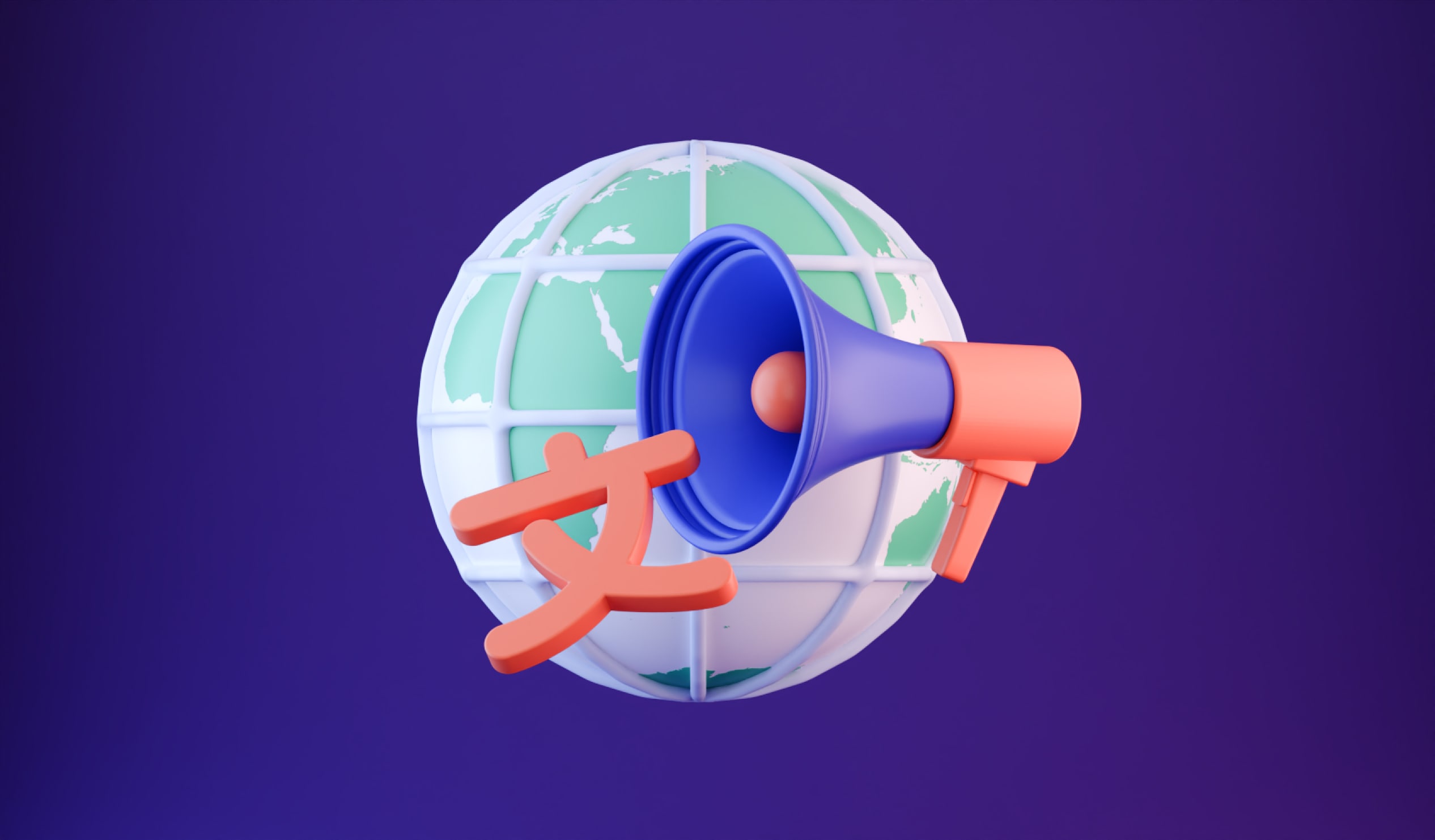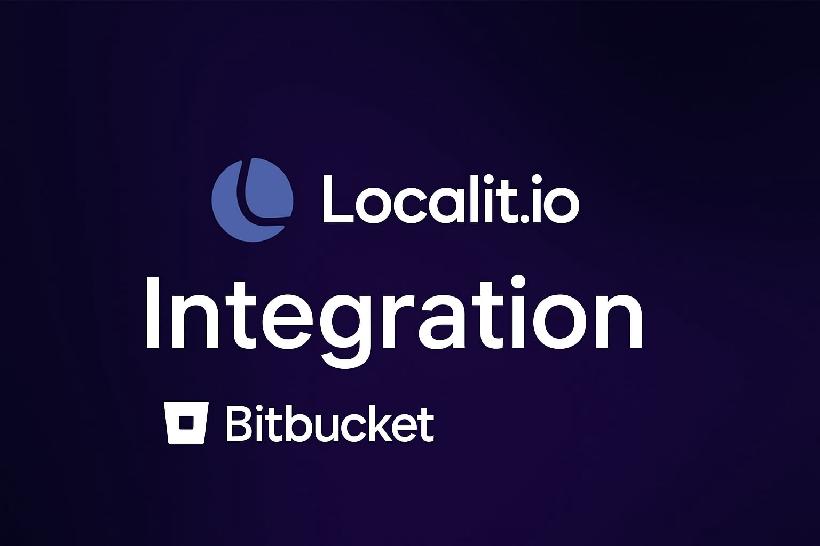More and more businesses around the world are taking advantage of our hyper-linked modern world and choosing to go global. Smart decision: with over 8 billion people living in this world, there's a customer for anyone out there. The fastest way to unlock hearts of audiences on the international market is to come up with a top-notch marketing campaign that will both attract attention and cement a company's place among the top contenders for revenues and profits.
However, the global market is diverse: what works in the US won't necessarily resonate with locals in Japan or create the right commotion in Brazil. What you need to effectively communicate a marketing message is effective localization that adapts your global marketing strategy to new markets. Easy enough, right? But where do you start on this journey? Stick around to find out, as we'll break down what marketing localization is, what you need to focus on, and offer a step-by-step guide for a successful global expansion.
Marketing Localization: What Is It?
Marketing localization is essentially a process of customizing and adapting your marketing materials for local markets through translation and making sure your references, humor, and wordplay makes sense (try translating "by the skin of your teeth" or "best thing since sliced bread" into another language word by word and see if that works). It includes three main stages:
Translation: All marketing content is simply rendered from the original language into the target one in a way that keeps all the intended meanings intact.
Transcreation: The translated content is reviewed and improved in accordance with local traditions, linguistic expectations, idiomatic conformity to create a finished product that resonates with a target market.
Localization: The localized content is peppered with technical touch-ups like making sure dates, currencies, color schemes, CTA buttons, and more are correct for the intended audience.
A successful marketing campaign aimed at foreign audiences needs to take into account multiple important factors that will improve the results of localization:
Cultural Adaptation: Align content with local customs and values.
Language & Dialects: Use accurate translations and regional expressions.
Visuals: Adjust imagery, colors, and symbols.
Legal Compliance: Follow local advertising and data laws.
Market Research: Understand local trends and consumer behavior.
Localized SEO: Optimize for local search terms.
Pricing & Currency: Display local prices and consider economic factors.
Analytics: Track performance with local metrics.
When done right, a successful marketing localization eases international expansion, builds brand loyalty, ensures a lasting impression in the minds of customers, and boosts your international standings.
Why Localize for The Global Market at All?
The localization process is no walk in a park and should not be taken lightly. But what are the benefits of all this hard work? There are some key stats that will shed light on this:
Companies that use localization are 1.5x times more likely to see an increase in total revenues.
Localized mobile apps get 128% more downloads and earn 26% more from in-app purchases.
76% of people prefer to buy products with info in their own language, and 40% won’t buy if it’s in another language, even if they understand it.
Localizing for China, the US, Japan, and Germany gives companies access to almost 50% of the world’s online sales.
E-commerce businesses that localize their websites see 70% more traffic and better conversion rates.
In short, foreign markets and global audiences respond well to localization. Therefore, your localization efforts will not go unnoticed (if done right that is).
Key Localization Marketing Challenges
There are a number of flashpoints that you need to keep in mind before launching into translation and localization. Let's review them:
Cultural Nuances
Every culture's got its quirks. What's considered perfectly normal in one place might fall flat in another. Mitsubishi learnt all about it with their Pajero model? In Spanish, it can mean "liar" or "incompetent person" or even worse depending on the country. They had to switch it to Montero to avoid giggles.
Linguistic Challenges
You might be tempted to just translate word for word in your localization. Not the best move. Idioms, slang, and humor can easily get lost in translation (pardon the pun). Think of jokes that make zero sense when translated. It's like trying to explain a meme to your grandma.
Consistency Across Markets
Keeping your brand's vibe the same everywhere is tough but rewarding. You want to be relatable locally but still feel like "you" globally. It's a balancing act that is hard to achieve but is something every business should strive to attain.
Legal Compliance
Different places, different rules. From data privacy to advertising standards, you've got to play by the local rulebook. No one wants legal headaches.
Limited Resources
Time and money aren't infinite, unfortunately. Deciding where to focus your efforts can be tricky but achieving a perfect balance is necessary if you are to succeed.
Tight Deadlines
Deadlines loom, and quality can't slip. Rushing can lead to mistakes, and nobody wants a marketing fail.
Crisis Management
When things go south in a foreign market, it's a whole new ball game. You've got to handle issues with cultural sensitivity and finesse.
Adapting to Change
Markets evolve, and so should you. Staying agile and keeping up with local trends is key. Remember, what worked yesterday might not work tomorrow.
What to Focus on For Successful Marketing Localization
When reviewing all the materials, collateral, texts, etc., your localization team might be tempted to just translate your website into the required language and call it a day. But there are more moving parts in this machinery we call localization. Understanding what is included in this process is essential if your global marketing plan intends to capture minds and conquer hearts of global audiences.
Website Localization
Internet is a great equalizer: it's used in every corner of the world by people of all walks of life. Therefore, to break through to a new audience, your website should be impeccable. Focus on these:
Website graphics – Adapt visuals to align with local preferences and cultural sensitivities.
Product pricing – Show prices in the local currency to eliminate the need for conversions.
Units of measurement – Adjust for regional standards (clothing sizes, weights, cm vs. in, etc.).
CTA buttons – Ensure translated text fits well and maintains a clean design.
Website footer details – Don’t overlook fine print and key legal information.
Terms of use, privacy policy, and cookies policy – Consult a local legal expert to ensure compliance with regional laws.
Emails
Who doesn't use emails nowadays? This channel of communication with customers is incredibly important and needs to be in top shape if you are to capture attention. Research shows that companies only have 10 seconds to do that, don't waste this precious time on subpar language and slapdash phrases.
Blog Posts
Your blog isn’t just a collection of words: it’s your megaphone, your handshake, your invitation to connect. Done right, it’s a trust-builder, an authority booster, and a way to pull your audience in, no matter where they are.
Multilingual content marketing? That’s where things get interesting. It’s not just about translating, it’s about transforming content. Telling stories that don’t just work in different markets but belong there.
Want engagement? Speak their language—literally and figuratively. Understand what they want to read, but also how they want to read it. Short and snappy? Long and insightful? Conversational or formal? Every detail counts.
Here’s what keeps potential customers hooked:
Local case studies
Region-specific industry trends
Guides tailored to local market needs
Interviews with local experts
User stories in the target language
Comparisons relevant to the market
Interactive content adapted for cultural relevance
Insights on regional consumer behavior
Localized best practices and strategies
SEO
Put yourself on your audience's radar by boosting your search engine standings in the local market. Do you often look beyond the first page of the Google search results? Neither do most people. Therefore, it's essential to secure your place in that top 10!
How do you do it? Here's the answer:
Cater to search intent
Remember that Google is not the only search engine out there
Research keywords
Learn more about local search habits
With this in mind, your website and blog posts will pop up at the top. And this means growth in customer base, level of awareness, and revenues.
Effective Localization Marketing Strategy: Guide
Marketing efforts will go the distance if you have a solid strategy at your disposal. Succeeding in a target market is an impressive feat but you need to wear the right armor to get there. Here's what you can focus on:
Step 1: Know Your Audience Inside Out
First things first—figure out who you're talking to. Localization isn’t just translation. It’s about speaking the right language, literally and culturally. Dive deep into demographics, preferences, and local behaviors. Run surveys, read local blogs, hang out in forums—get the pulse of the place. Your content needs to feel like it was made there, not just translated.
Step 2: Adapt Your Content, Don't Just Translate
This step is all about transforming—not just words, but meaning and intent. Start with tone and voice. Is your audience more formal or casual? Adjust accordingly. Use idioms and cultural references that resonate locally. And don't forget visuals—colors, symbols, even layout can mean different things in different places. A color that’s lucky in one culture might be bad news in another.
Review visual elements – Adapt imagery and colors.
Update slogans and taglines – Make them culturally relevant.
Adjust product descriptions – Highlight features that matter locally.
Step 3: Leverage Local SEO
Your content won’t matter if no one finds it. Optimize for local search engines and keywords. This means more than just translating your keywords—research what locals are actually searching for. Think about local slang, regional spellings, and even trending hashtags. Update your metadata and don’t forget about backlinks from local sites—they build credibility.
Step 4: Localize Your Pricing and Payment Options
This is where you make or break a deal. Display prices in the local currency—no one likes doing mental math before buying. Offer popular local payment methods—think PayPal alternatives, mobile wallets, or cash on delivery, depending on the market. Transparency is key; no surprise fees.
Step 5: Test, Analyze, and Iterate
Localization isn’t a one-and-done. Launch, then listen—monitor engagement metrics like bounce rates, time on page, and conversion rates. Run A/B tests to see what resonates. Use feedback loops—ask your audience what they like or don’t. Keep tweaking, keep learning.
Track local engagement metrics – Adjust content based on performance.
A/B test localized campaigns – Find what works best.
Gather user feedback – Iterate based on real user experiences.
And there you have it—a solid plan for marketing localization that feels authentic, builds trust, and drives engagement.
Localize with Localit
To summarize all of the above, marketing localization is far from easy and requires a lot of attention (to big picture stuff and minute details alike). This is a lot to juggle when the marketing team is busy with the domestic market, the localization team is trying to, say, learn more about the way things are done in South East Asia, and stakeholders demand growth and profits. Is there a way to make it easier by streamlining the localization process, cutting costs, and automating routine tasks.
Yes, there is! Just use Localit, a cutting-edge localization software and translation management system (TMS) that utilizes the power of AI to cut down project times without sacrificing quality or the budget. What can it do? Take a look.
Affordability: Offers flexible pricing plans, including a free option, making it accessible for various team sizes.
User-Friendly Interface: Provides an intuitive platform that simplifies the localization process for users.
Built-In Chats: Facilitates seamless communication among team members with integrated chat features.
AI Translator Choice: Allows selection among popular AI translation tools like ChatGPT, Google Translate, and DeepL.
High Processing Rates: Achieves processing speeds of nearly 200 ms for efficient project handling.
Logbook and Rights Management: Keeps track of all project actions and allows assignment of specific user permissions.
Universal Tool: Supports translation of various content types, including files, websites, apps, and software.
Automatic Translation: Offers instant translation capabilities to save time.
Head over to localit.io to try it out! Get in touch to learn more.
Unlock New Markets with a Localized Marketing Strategy
Expanding into a new target market is about making your brand feel like it belongs. From tweaking visuals to reworking messaging for cultural relevance, content localization ensures that your global marketing campaign speaks directly to an international audience. We’ve covered everything from avoiding embarrassing linguistic mishaps to tailoring marketing strategies that resonate with local consumers. Done right, localizing your marketing builds trust, drives engagement, and sets you apart from competitors who are too shortsighted to localize.
With the right approach and tools (likeLocalit) you can streamline the process, maintain brand consistency, and get results faster. Whether you’re looking to break into new markets or strengthen your global brand, proper localization is the key to success. So, if you’re serious about digital marketing that actually converts across borders, don’t just translate: localize, adapt, and connect. Your audience is out there, waiting.

 Bitbucket Integration: Complete Guide to Automated Localization Workflow
Bitbucket Integration: Complete Guide to Automated Localization Workflow ChatGPT-5 Now Available in Localit.io
ChatGPT-5 Now Available in Localit.io Everything You Need to Know about Mobile App Localization: Challenges + Best Practices of Working in a Different Language
Everything You Need to Know about Mobile App Localization: Challenges + Best Practices of Working in a Different Language